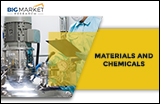
Global Construction Adhesive Market
- MAR2979072
- 200 Pages
- October 2018
- Materials and Chemicals
There are two ways in which the adhesives are applied, either in beads or in full coverage. When applying in beads, they are applied in a line to a surface by the use of a caulking gun. This is by far the most economical and handy method to apply the adhesive and is used for gluing large materials to flat surfaces. Examples include: wood paneling, attaching dry wall to studs, etc. The other way to apply the adhesive is by applying it in full coverage using a notched trowel. It is to be used when the material to be glued is small such as tiles.
Market Dynamics
Urbanization is growing at a rapid pace, this has lead to a rise in construction activities around the world which is essentially driving the sales of Construction Adhesive. Apart from these, the products are now commonly used in household activities as well which has been an additional driver.
Market Segmentation
The Market can be segmented on the basis of Technology, Application and Resin Type. On the basis of Technology, the market is divided into Water Based, Solvent Based, Reactive etc. Next, on the basis of Applications it is divided into Residential, Commercial and Industrial. Whereas on the basis of Resin Type, it is divided into Acrylic Adhesive, Polyurethanes, Poly Vinyl Acetate, Epoxy and etc.
Regional/Geographic Analysis
The United States and Canada in North America; Asia-Pacific and Middle East is set to be the largest growing market; Germany, UK, France, Italy and Russia in Europe; Brazil, Chile, Argentina and Peru in South America have the largest market in their respective regions.
Key Players
Some of the major players in the market include H.B. Fuller, 3M Company, Sika AG, The DOW Chemical Company, Bostik SA (An Arkema Company), Henkel AG & Co. KGaA, Dap Products, Franklin International, Illinois Tool Works Incorporation, and Avery Dennison Corporation.
Report Contents:
> Market segments
> Market Drivers, Restraints and Opportunities
> Market Size & Forecast 2016 to 2022
> Supply & Demand Value Chain
> Market - Current Trends
> Competition & Major Companies
> Technology and R&D Status
> Porters Five Force Analysis
> Strategic and Critical Success Factor Analysis of Key Players
Regional Analysis:
> North America
>> US and Canada
> Latin America
>> Mexico, Brazil, Argentina and Rest of Latin America
> Western Europe
>> EU5 (Germany, France, Italy, Spain, U.K.)
>> Nordic Countries (Denmark, Finland, Norway, and Sweden)
>> Benelux (Belgium, The Netherlands, and Luxembourg)
>> Rest of Western Europe
> Eastern Europe
>> Russia
>> Poland
>> Rest of Eastern Europe
> Asia Pacific
>> China
>> India
>> Japan
>> Australia and New Zealand
>> Rest of Asia Pacific
> Middle East and Africa
>> GCC countries (Saudi Arabia, Oman, Qatar, Bahrain, UAE and Kuwait)
>> South Africa
>> North Africa
>> Rest of Middle East and Africa
This report is an elaborate aggregation of primary inputs from industry experts and participants across the supply chain. It provides details on market segmentation which is derived from several product mapping exercises, macroeconomic parameters and other qualitative and quantitative insights. The impact of all such factors is delivered across multiple market segments and geographies.
Report Highlights:
> Detailed Historical Overview (Market Origins, Product Launch Timeline, etc.)
> Consumer and Pricing Analysis
> Market dynamics of the industry
> Market Segmentation
> Estimated Market Sizing in terms of volume and value
> Recent trends in Market and impact
> Research Status and Technology Overview
> Extensive Industry Structure Coverage
Similar Reports
Photonic Crystals are attractive optical materials for controlling and manipulating the flow of light. The global market for components and modules using Photonic Crystals indicates a CAGR of 33.1% and is estimated to reach $20.4 billion in 2017.
Nanomaterials possess nanoscale dimensions ranging from 1 to 100 nanometers. They occur naturally or can be engineered with specific properties such as size, shape, surface, and chemistry. Volcanic ash and forest fibers are some of the examples of natural nano...
- Publish Date: September 10, 2016
- $5820
Global molded plastics market was valued at $529,845 million in 2016, and is expected to garner $690,158 million by 2023, registering a CAGR of 3.9% from 2017 to 2023. Molded plastics are synthetically produced non-metallic compounds, which can be molded ...
- Publish Date: July 4, 2017
- $5370